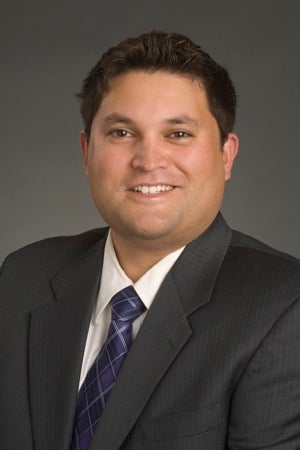
Imagine setting the national research agenda for the next decade.
Every 10 years, scientists from across the nation – all top researchers in their respective fields – do exactly that. They come together to help the National Academies of Sciences, Engineering and Medicine set their upcoming science priorities. These priorities influence everything from where to invest money for research projects and large-scale programs that might lead to the creation of new disciplines, to generating new research opportunities for future undergraduate and graduate students.
For the last 18 months, Boise State’s Alejandro Flores, an associate professor of geosciences, served on a committee for the National Science Foundation’s Division of Earth Science (EAR), setting the division’s priorities for the next decade. EAR is the primary federal group for funding and providing essential infrastructure capabilities to the earth science community. The committee’s final report was released May 20.
“The report is really to help NSF find those things that the earth sciences community is really excited about that they should be investing in now, as well as finding potentially ‘game changing’ scientific opportunities that they should help catalyze,” Flores explained. “Additionally… how can we make the earth sciences a more equitable and inclusive enterprise? In addition to challenges like climate change, we as earth scientists need to do a better job of making our discipline more accessible and inclusive to minoritized populations.”
Some of the report’s key priorities include:
- Answering pressing questions that focus on understanding Earth as an active, dynamic and intertwined system. These questions range from investigating when, why and how plate tectonics developed to overarching questions about how the Earth impacts society.
- Understanding how Earth’s terrestrial skin – its critical zone – influences the climate (Boise State is well poised as a partner in NSF’s Reynolds Creek Critical Zone Observatory to better understand soil carbon in a changing climate.)
- Funding a national consortium for geochronology, focus on supporting collaborative research. (Boise State already may be ahead of the curve on collaborative geochronology research.)
- Enhancing its existing efforts to provide leadership, investment and centralized guidance to improve diversity, equity and inclusion within the earth science community.
The committee set these priorities by first scouring existing literature to find the pressing issues various research communities are working on. From there, members of the committee, would find commonalities between the research and present them to the rest of the committee – which met in person every few months – for discussion.
“As a hydrologist and critical zone scientist, I played an important role in prompting members of those communities to respond to input solicited by the community,” Flores said. “I really wanted to represent the perspectives of my scientific communities, specifically the water science community and the closely related community that studies Earth’s critical zone – the reactive skin of Earth’s surface that extends from the top of the canopy to the groundwater beneath the surface.
“There is so much interesting science being done in these communities, the fields are changing very quickly, and we’re trying to understand how climate change may affect our ability to have clean water and to grow food to feed the planet. I really felt like this was an important time to be doing this service for that science.”
Read the full report online or download a free pdf of the committee’s findings here.
The National Academies of Sciences, Engineering and Medicine are private, nonprofit institutions that provide independent, objective analysis and advice to the nation, to solve complex problems and inform public policy decisions related to science, technology and medicine. They operate under an 1863 congressional charter to the National Academy of Sciences, signed by President Lincoln.